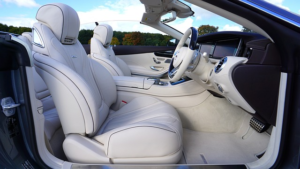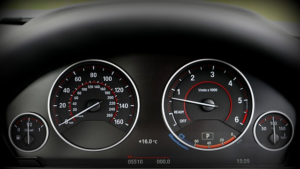What is fast charging? What is rapid charging? What is ultra-rapid charging? – DrivingElectric
There are several different types of electric-car charger available to the zero-emissions motorist in the UK these days. You may have heard the terms ‘AC charging’ and ‘DC’ charging used, as well as descriptions such as ‘fast’, ‘rapid’ and ‘ultra-rapid’.
While almost all electric cars are compatible with the various types of charger on offer, these different chargers operate at different …….

There are several different types of electric-car charger available to the zero-emissions motorist in the UK these days. You may have heard the terms ‘AC charging’ and ‘DC’ charging used, as well as descriptions such as ‘fast’, ‘rapid’ and ‘ultra-rapid’.
While almost all electric cars are compatible with the various types of charger on offer, these different chargers operate at different speeds and therefore some will take longer than others to fully replenish your battery.
So what’s the difference between them, how do they work and where can you find them? Here, we explain all you need to know about fast, rapid and ultra-rapid electric-car charging in the UK.
AC and DC: fast, rapid and ultra-rapid charging for electric cars explained
Electric-car batteries have to be charged with direct current (DC), but the typical three-pin sockets found in homes – as well as wallbox chargers – draw alternating current (AC) from the grid. To convert AC to DC, all fully electric and plug-in hybrid vehicles feature a built-in convertor, or rectifier.
The extent of the convertor’s capability to turn AC into DC partly determines the vehicle’s charging speed. So-called ‘fast chargers’ are rated between 7kW and 22kW. They draw AC current from the grid and rely on the car’s converter to turn it into DC. A typical fast AC charger can fully recharge a small electric car in three to four hours. Chargers like these can often be found on high streets or in shopping-centre car parks – places where cars are normally parked for a couple of hours at a time.
If you need top up quicker than that – for example, in the middle of a long journey – then your best bet is a rapid charger. There are two kinds: Rapid AC charging uses more power, at 43kW, than conventional fast AC charging, but the process is the same – AC is converted into DC by the electric car’s own converter.
The second (and much more popular) method of rapid charging supplies DC current straight to the car, bypassing the converter, allowing the car to charge much faster. DC rapid chargers are more expensive to install, which is why it has taken a while for significant numbers to appear. But as of May 2021, there were over 3,500 rapid chargers in the UK, with more on the way. These are often found at ‘charging hubs’ in motorway service areas or close to major A-roads.
While rapid AC chargers supply power at 43kW, rapid DC chargers work at 50kW or more. In comparison to fast charging, a 50kW DC charger will charge a 40kWh Nissan Leaf from flat to 80% in 30 minutes. These days, providers are increasingly installing ultra-rapid DC chargers, which typically supply power at 150kW or more, with some being capable of up to 350kW.
However, there are currently less than 1,000 ultra-rapid units in the UK, with 350kW only offered by the Fastned and IONITY networks. Tesla’s Supercharger network is one of the most popular DC rapid charging networks, and its latest V3 supercharger units are capable of charging speeds up to 250kW. Below is a rough breakdown of the main charging speeds available:
| Slow AC | Fast AC | Rapid AC | Rapid DC | Tesla Supercharger | Ultra-rapid DC |
|---|---|---|---|---|---|
| 3kW | 7-22kW | 43kW | 50kW+ | 120-250kW | 150kW+ |
Can any electric car use a fast or rapid charger?
The short answer is no, as it depends on what type of connector your car uses. Most electric cars you can buy these days feature a Type 2 connector, however older models may have a Type 1 or Commando connector. These can sometimes be found on certain AC fast chargers, but these units are far less common now.
Most AC and DC fast chargers use a Type 2 connector, although your car may not be able to recharge at the maximum speed offered by each unit. For example, the maximum charging capacity of the entry-level Renault ZOE is 22kW. Plugging into a charger capable of more than that won’t get you topped up any quicker – but the car will automatically limit the amount of power it receives to prevent damage to the battery.
Whether your electric vehicle can use DC rapid charging depends on two factors: its maximum charging capacity and which connector types it accepts. Rapid DC chargers use two types of connector: CCS and CHAdeMO. The latter is less common and only found on a small selection of cars like the Nissan Leaf, Toyota Prius Plug-In and Kia Soul EV, among others.
The CCS connector is compatible with a much larger number of new electric cars, including the Tesla Model 3, Jaguar I-Pace, Polestar 2, Porsche Taycan, Volkswagen ID.3 and Volkswagen ID.4. This is also the connector you’ll find on ultra-rapid 150-350kW charging points.
Check your car’s manual or brochure to find out which connector it has. The good news is that most DC rapid-charging stations in the UK offer both CCS and CHAdeMO connectors, so you won’t be caught short wherever you stop for a recharge.
Are rapid and ultra-rapid chargers more expensive to use than fast chargers?
In most cases, yes. The tariffs for rapid and ultra-rapid charging are often higher than for slow or fast charging, but as with petrol or diesel, prices can differ depending on which charging network a particular rapid charger is operated by.
For example, InstaVolt charges a flat rate of 35p per kWh, while BP Pulse charges differently depending on if you’re a member, a subscriber or a pay-as-you-go user. Its prices range from 16-42p per kWh depending on the speed of the charger you use, and there are overstay fees for using faster units for over 90 minutes. Meanwhile, IONITY charges 69p per kWh in the UK, but its locations offer much faster charging speeds.
Current tariffs are always clearly displayed on charging providers’ websites, so check there for the most up-to-date pricing information and fees.
Where to find rapid and ultra-rapid chargers
The Zap-Map website and its accompanying app are popular tools for electric and plug-in hybrid drivers, as you can use filters to find the exact type of charger you need. You select the type of connector you need to use, the maximum charging speed and even which network they’re on. The map will also show you how many chargers are at each location, how much they’ll cost to use and if they’re in use or not. Alternatively, electric and plug-in hybrid cars’ sat navs often feature databases with charger locations in case you’re running low on battery mid-journey.
Will frequent fast or rapid charging damage my battery?
Lithium-ion batteries, the type commonly found in electric cars and PHEVs, deplete over time, just like any other form of battery. And while the batteries found in laptops and mobile phones can be damaged if they’re charged at high power consecutively, electric vehicle batteries won’t. This is because manufacturers have built in safety systems to prevent damage from frequent use of rapid or fast charging. For example, the rate of charge can be automatically lowered if the car thinks too much power is being supplied to the battery too often.






